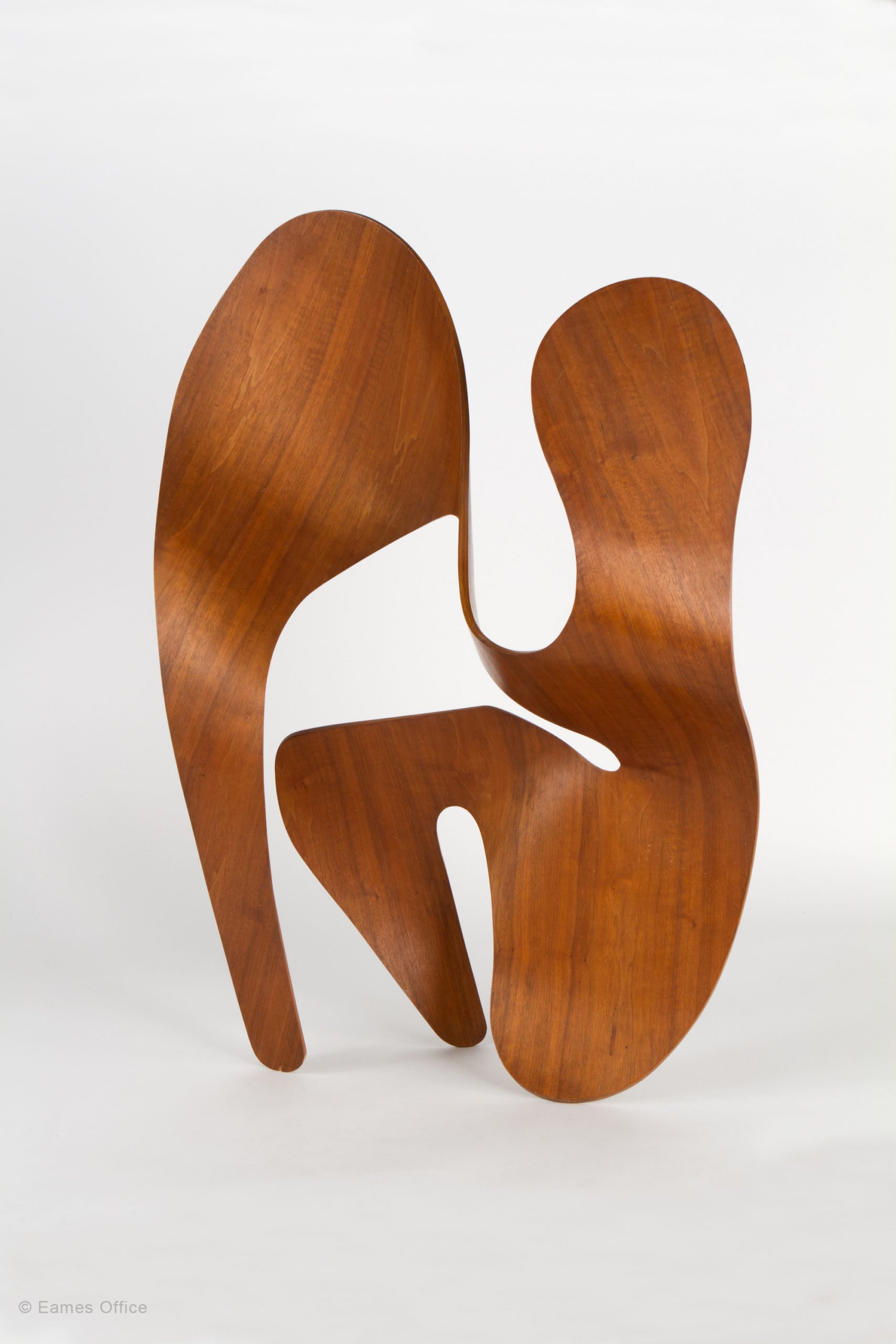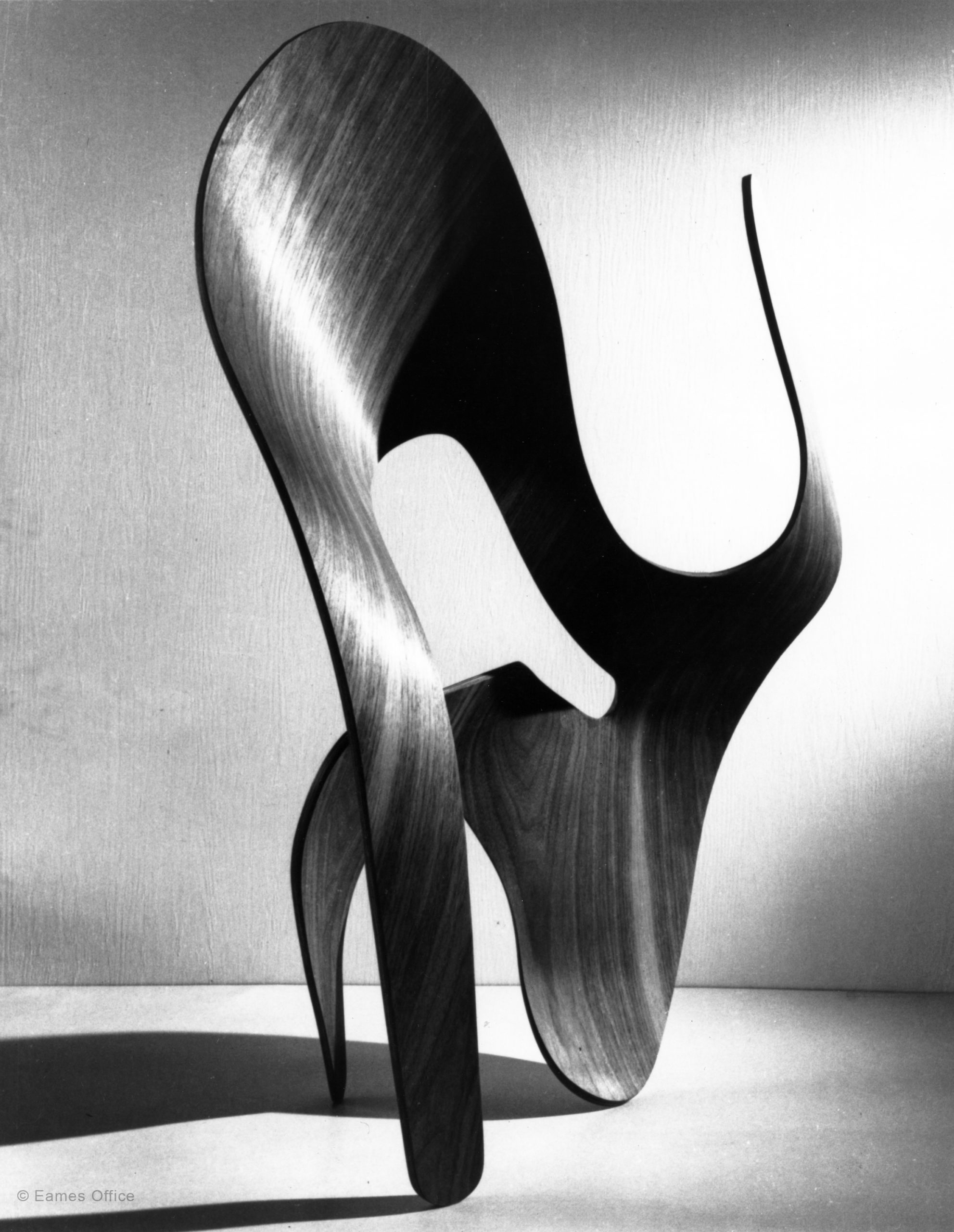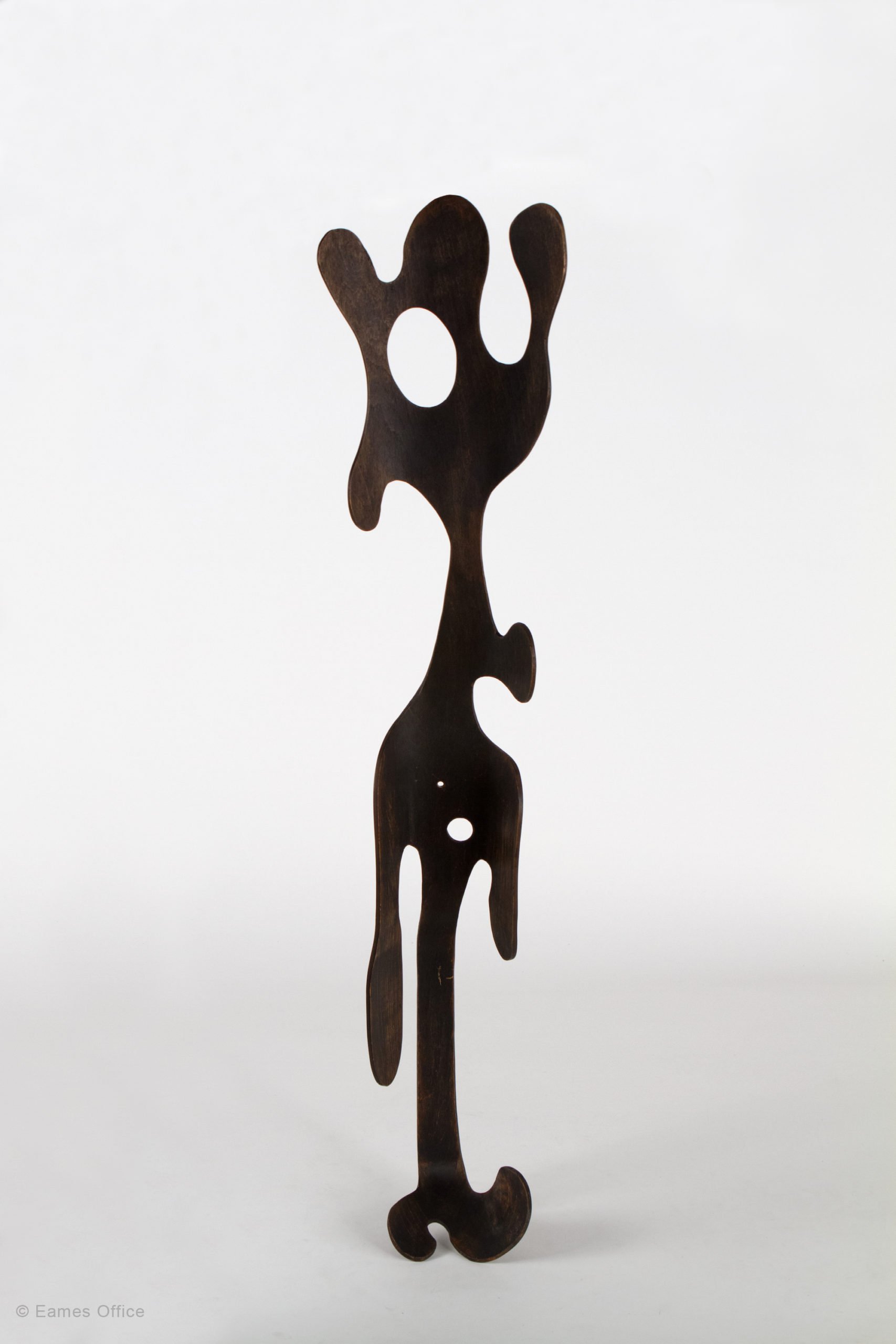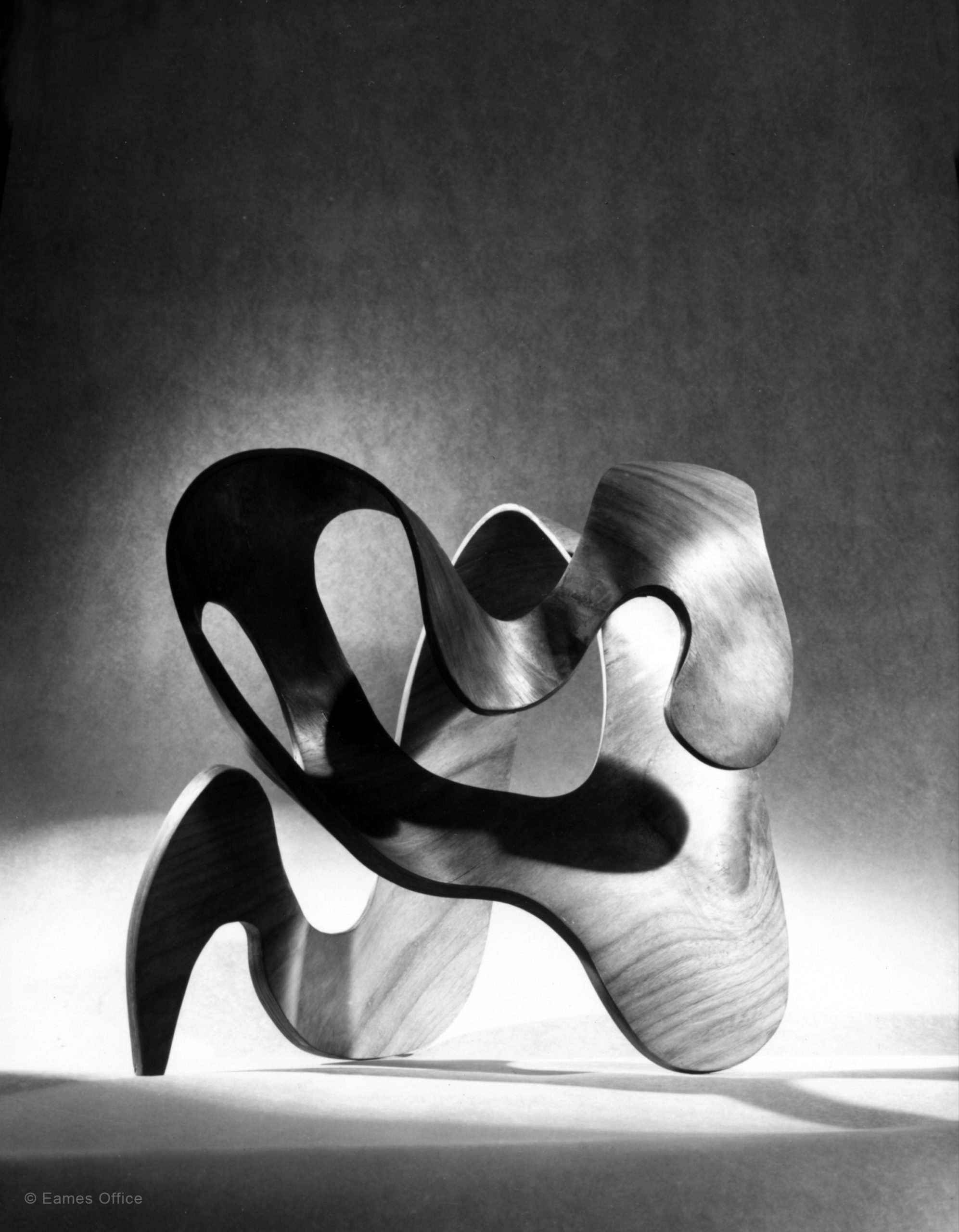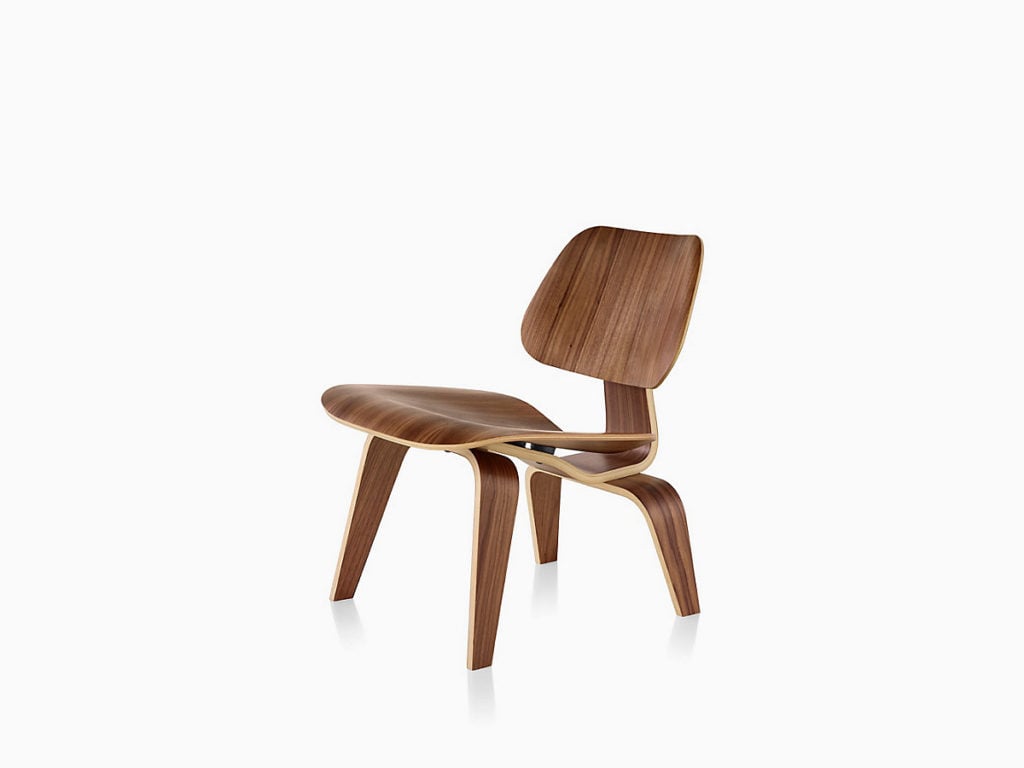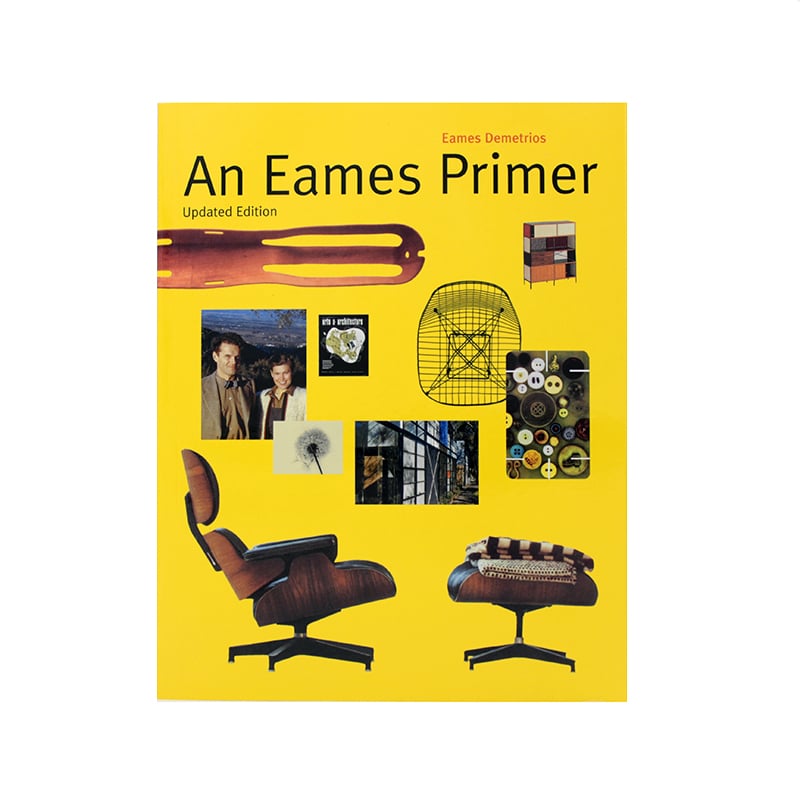Additional Information
Characterized by delicate changes in thickness and graceful three-dimensional curves, the groundbreaking, innovative molding techniques worked out through the Plywood Sculpture would give rise to some of the most important furniture designs of the 20th century. Only two sculptures were made in 1943. After a rigorous year-long research and production process the Plywood Sculpture is now available as a limited edition of twelve – celebrating eighty years of Eames Office.
“Charles and Ray’s sculpture represents a pivotal moment in their work, in their lives, and in design history and continues to inspire all that encounter its beauty today. For Charles and Ray, art was the best way to test the technology and technology was the best way to make the art.”
Eames Demetrios, Director of Eames Office
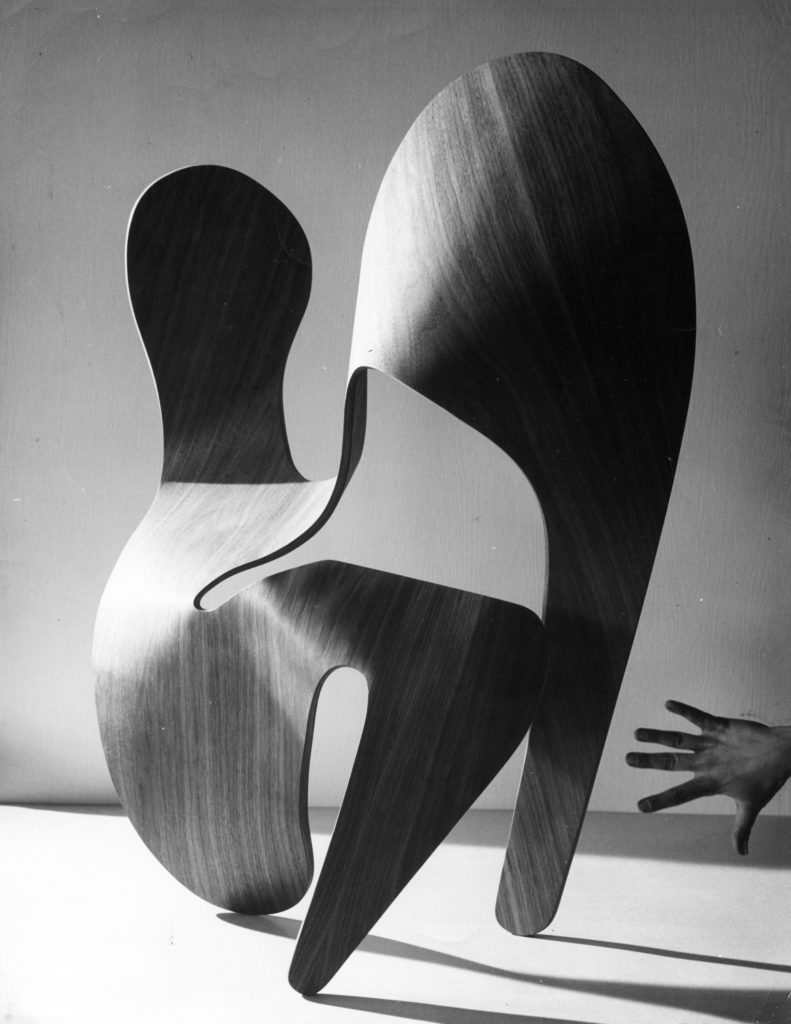
In a sense, the Eames Office takes shape with Charles and Ray’s courtship letters and begins with a wedding held at a friend’s Chicago apartment on June 20, 1941. This was the moment when Charles and Ray Eames became partners in life and partners in design, joined together by their love of creation, and passion for solving problems that needed to be solved. Immediately after the wedding, the couple moved west and lived in a Hollywood hotel as they got to know Los Angeles and make new friends, one of whom was John Entenza, publisher of Arts and Architecture magazine, who introduced Charles and Ray to Richard Neutra. The architect had recently completed his Strathmore Apartments, which is where the Eameses came to live. It would be two years before the Eames Office moved to 901 Washington Boulevard in Venice, California, so the Neutra apartment initially served as a working laboratory, and home to a tool that helped shape (literally) the future of modern design: The Kazam! machine.
A curved plaster mold threaded with powerful electric coils wired directly – in a death defying move by Charles – to a transformer on a nearby power pole, the Kazam! machine was a homemade device for molding plywood. The process required extremely thin sheets of wood veneer to be sandwiched with glue, clamped tightly in the hot mold, and then held in place for four to six hours by a rubber balloon inflated by a bicycle pump. Charles and Ray would repeat these steps – in their small apartment, where they had to sneak in the materials at night by climbing sixty-five stairs in the dark – as many as a dozen times to create one piece of curved plywood.
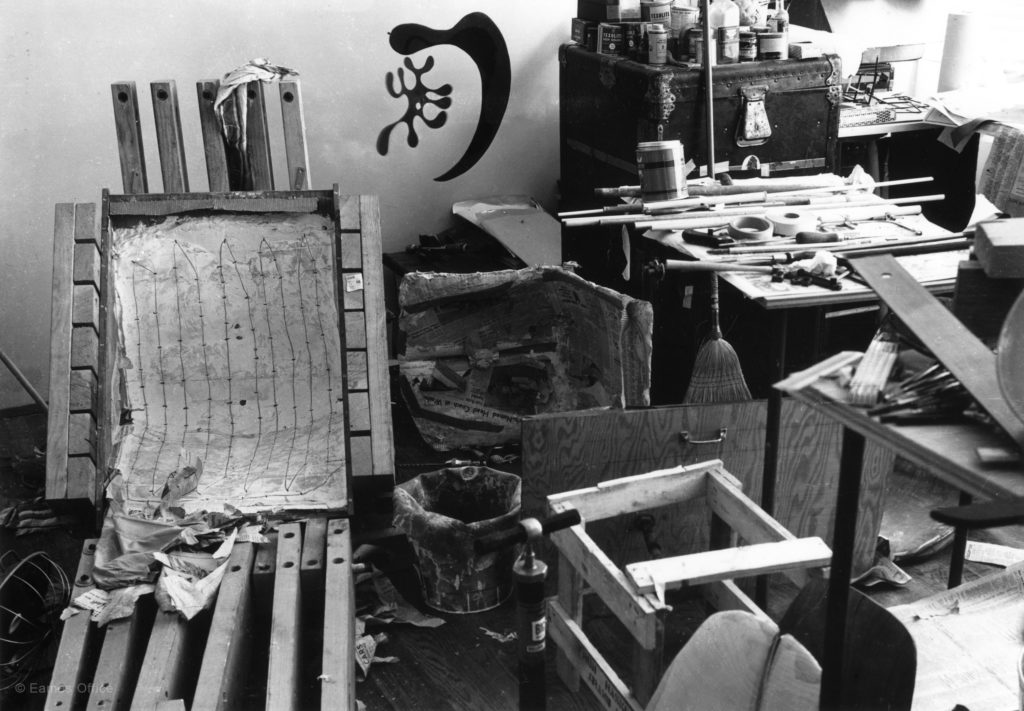
The Kazam! machine was the couple’s first significant hands-on experience with molded ply. With this machine they’d successfully designed and figured out how to mass-produce a U-shaped leg splint for
the U.S. Navy in 1942 but mastering how to make molded forms with compound curves was still uncharted territory, for the Eameses and all designers worldwide. Even large-scale furniture companies hadn’t succeeded, a fact Charles and Ray were aware of after watching two manufacturers attempt and ultimately fail to mass-produce the Organic Chair, Charles Eames and Eero Saarinen’s winning entry in MoMA’s 1940 Organic Furniture competition.
After the MoMA competition, for which Ray, then Ray Kaiser, worked on the drawings for its final presentation, Saarinen moved on to other projects. The Eameses, however, were determined to solve what they didn’t see simply as a manufacturing problem, but rather a design problem. They knew that if they were going to create an organically shaped, single-piece molded chair that could be mass-produced and whose design would optimize the manufacturing technique rather than fight it, then they’d have to figure out that technique themselves.
Anyone familiar with the thirty-seven-year brilliant career of Charles and Ray Eames knows how this story ends, but what you may not know is that everything they created – furniture, films, World’s Fair exhibitions, architecture and more – and how beauty and functionality are never in conflict in any of their work, all began with a sculpture – sketched on a small scrap of paper that would fit in the palm of your hand. Sketched in pencil, the drawing on this paper, circa 1943, is by Charles and Ray Eames. In the center is an organically shaped form, which we now know to be a sculpture, and all around it are notes and measurements written in two styles of handwriting – the quick, loopy cursive of Charles, and the neat, artistically drawn script of Ray.
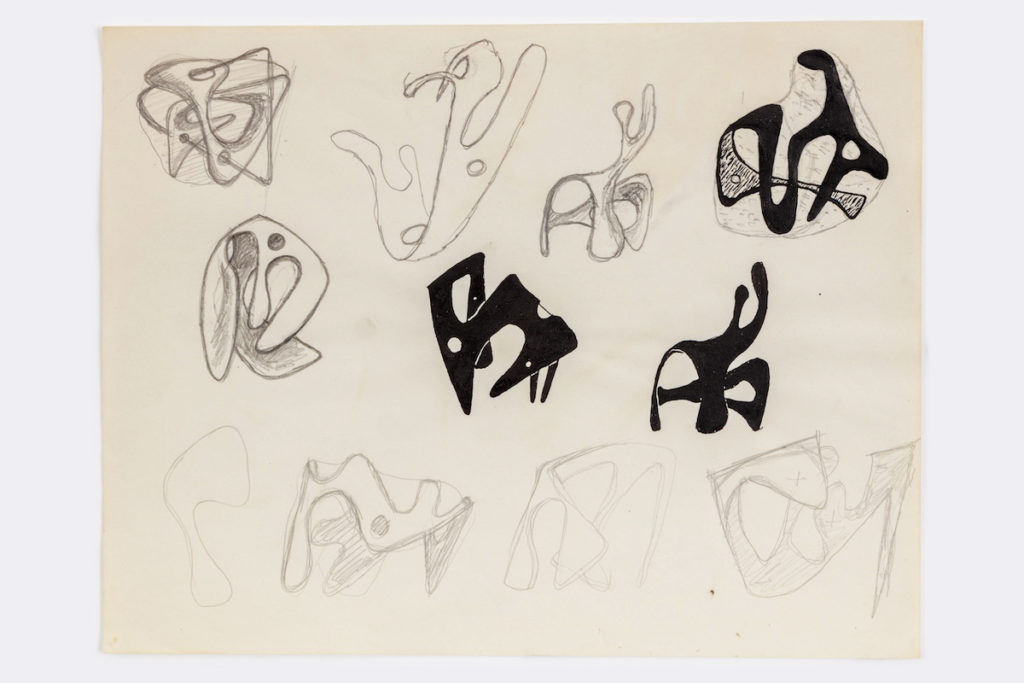
“Charles and Ray always said that their early hands-on experience with molded plywood was essential to their development because it required them to design a lot of tools. They realized that when you design a tool you need to have a really good idea of what that tool is going to do. They took that idea with them in everything they did – and it started with their early experiments with molded ply.”, says Eames Demetrios.
To understand the constraints of plywood, Charles and Ray designed experimental shapes to be the best possible test for pushing the envelope on curves. In 1942, they made a first small sculpture, most likely using the Kazam! Machine in their apartment. This sculpture, which has since disappeared, had one same wall-thickness throughout. Building on knowledge gained in production of their molded plywood legsplints, the couple began experimenting with even more complex organic shapes, thinner sections and varying numbers of layered veneers. They realized that the molding process was not sophisticated enough for any of these challenges so they started using stronger presses and metal sheets on the molds. This process of iteration and ability to surrender to the journey is a thread in everything Charles and Ray designed.
With its abstract organic shape, the 1943 Plywood Sculpture was not only a beautiful work of art but also a technological breakthrough in the amount of control they were able to achieve. Being able to make the curves three-dimensional and precisely guided represents a pivot point in the Eameses’ understanding of plywood, and a pivot point in midcentury modern design. The objects we live with – how they’re made and what they look like – were forever changed by this hands-on, problem-solving approach of Charles and Ray Eames.
“In a sense, their chairs are tools for living and the sculpture is a tool for beauty. One of the main threads in Charles and Ray’s work is that art and technology are united.”
Eames Demetrios
Before enrolling to Cranbrook and ultimately founding the Eames Office in California, Ray Eames was a promising young artist in New York City. From 1933 to 1939 she studied with abstract expressionist painter Hans Hofmann. Her paintings and collages were shown in several publications and exhibitions of the American Abstract Artists group of which she was a founding member. Feeling discontent with the limiting nature of painting and looking to learn more about architecture and the three-dimensional space, Ray went to Cranbrook in 1940. As Ray later said: “I never gave up painting, I just changed my palette.”
The Plywood Sculpture is a perfect synthesis of artistic expression and experimental yet rigorous technical expertise. As a Christie’s catalogue puts it “the sculpture unites the parallel narratives of fine art, sculpture and industrial design.” In 1943, Charles and Ray Eames made two sculptures in an experimental mold, one of which was exhibited at New York’s Museum of Modern Art in 1944. After being exhibited at MoMA’s “Design for Use” exhibition, the sculpture was purchased by curator Serge
Chermayeff, and today it is in the permanent collection of the Vitra Design Museum in Germany.
However, this wasn’t the one that the Eameses kept for themselves. Both sculptures were made in the same production tool but, due to the natural properties of wood and the fact that veneers have a tendency to warp after being removed from a mold, they are not identical. The legs are positioned in a slightly different way, which changes the feeling of the piece and how it activates a space, and one sculpture has a more contrasting veneer pattern.
The sculpture that the Eameses kept for themselves stayed in the hands of the Eames family for decades, and it is now held in a private museum collection. It is this sculpture, the one cherished by Charles and Ray as well as the entire Eames Office, on which the limited edition Plywood Sculpture is modeled.
Explore Similar Works
Related Products
Browse a curated selection of Eames Office products we think you’ll love
